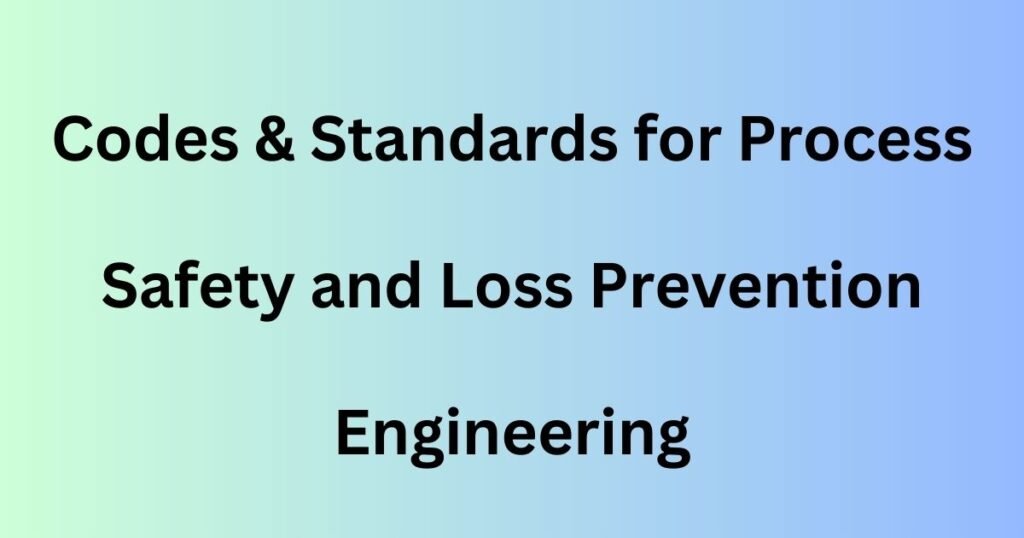🚀 Introduction
In today’s fast-paced industrial world, where petrochemicals, oil & gas, pharmaceuticals, and energy industries are rapidly expanding, process safety has become a crucial discipline. A single lapse in process safety can result in catastrophic consequences: loss of life, environmental disasters, business disruption, and reputational damage.
This article serves as a comprehensive guide to process safety, covering its fundamentals, real-life case studies, applicable standards, key methodologies, and why it should be a top priority for engineers, operators, and managers alike.
📌 What is Process Safety?
Process Safety refers to preventing fires, explosions, and accidental chemical releases in facilities that handle hazardous substances. It differs from occupational safety, which focuses on slips, trips, and falls.
🔍 Key Focus Areas:
- Integrity of operating systems and processes
- Safe containment of hazardous chemicals
- Managing major accident hazards (MAHs)
✅ Objective:
To ensure safe design, operation, maintenance, and management of industrial processes involving hazardous substances.
🧠 Why is Process Safety Important?
- Protects Human Life: Prevents accidents that can result in fatalities and injuries
- Safeguards Environment: Avoids environmental pollution through toxic releases
- Ensures Business Continuity: Reduces downtime, insurance claims, and legal liabilities
- Builds Reputation: Demonstrates corporate responsibility and compliance
🏭 Real-Life Process Safety Disasters
1. Bhopal Gas Tragedy (1984)
- Methyl isocyanate (MIC) leak
- Over 5,000 deaths and hundreds of thousands injured
- Root cause: poor maintenance, lack of safety systems, and human error
2. Texas City Refinery Explosion (2005)
- 15 deaths, 180 injuries
- Caused by overfilling and ignition of hydrocarbons
- Highlighted poor safety culture and inadequate hazard analysis
3. Deepwater Horizon Blowout (2010)
- Oil spill in the Gulf of Mexico
- 11 deaths, billions in damages
- Failure in well control systems and lack of risk assessment
🛠️ Core Elements of Process Safety
The Center for Chemical Process Safety (CCPS) outlines 20 elements under the Risk-Based Process Safety (RBPS) framework. These are grouped into four pillars:
1. Commit to Process Safety
- Process Safety Culture
- Compliance with Standards
- Workforce Involvement
2. Understand Hazards and Risks
- Process Knowledge Management
- Hazard Identification and Risk Assessment (HAZID, HAZOP, LOPA)
3. Manage Risk
- Operating Procedures
- Safe Work Practices
- Asset Integrity and Reliability
- Management of Change (MOC)
4. Learn from Experience
- Incident Investigation
- Audit and Compliance
- Measurement and Metrics
🔍 Process Safety vs Occupational Safety
| Aspect | Process Safety | Occupational Safety |
|---|---|---|
| Focus | Hazardous processes & equipment | Personal safety (slips, falls) |
| Consequences | Catastrophic (fire, explosion) | Localized injuries |
| Frequency | Low frequency, high consequence | High frequency, low consequence |
| Examples | Reactor explosion, toxic leak | Falling from a ladder |
🧪 Tools and Techniques in Process Safety
1. HAZOP (Hazard and Operability Study)
A structured technique to identify potential deviations and consequences in a process.
2. LOPA (Layer of Protection Analysis)
Semi-quantitative tool to assess if safety layers are adequate to mitigate risk.
3. SIL (Safety Integrity Level) Study
Evaluates the required reliability of Safety Instrumented Systems (SIS).
4. QRA (Quantitative Risk Assessment)
Estimates risk levels for specific scenarios using numerical data.
5. Fire & Gas Mapping, CFD Modelling, and Dispersion Analysis
Advanced studies for facility layout and response planning.
📘 Standards and Guidelines
- OSHA PSM (29 CFR 1910.119) – U.S. standard for Process Safety Management
- CCPS Guidelines – Widely adopted global best practices
- API RP 754 – Process safety performance indicators
- IEC 61511 – Safety instrumented systems in the process industry
- IS 15656 – Indian standard for PSM in chemical process industries
📈 Role of Process Safety in Project Lifecycle
| Project Phase | Process Safety Activity |
| Feasibility Study | Identify MAHs, perform HAZID |
| Basic Engineering | Perform HAZOP, develop Safety Philosophy |
| Detailed Design | SIL Study, Fire & Gas Mapping, QRA |
| Construction | MOC, Safety Training, Audit |
| Commissioning | Pre-startup Safety Review (PSSR) |
| Operation | Incident investigation, maintenance audits |
👷 Who Should Be Involved in Process Safety?
- Chemical Engineers
- Process Safety Engineers
- Operations & Maintenance Personnel
- Design & Project Engineers
- Plant Managers & HSE Professionals
- Senior Leadership (for culture & compliance)
🧭 Future of Process Safety
- Digital Twins & AI-based Risk Prediction
- Cloud-based Process Safety Management Systems
- Real-time Monitoring Sensors
- Integrated Safety and Sustainability
✅ Conclusion
Process safety is not a cost but an investment in people, profit, and the planet. It requires a proactive approach, commitment from leadership, and a culture of continuous improvement. Whether you’re a fresh graduate, mid-level engineer, or plant head, embracing process safety is a decision that safeguards everything we value.
“A good safety culture is not built in a day, but it can save lives every single day.”
📣 Want to Learn More?
Stay tuned for our in-depth series on:
- HAZOP Study
- SIL Verification
- QRA Methodology
- Fire Hazard Analysis
🔗 Bookmark www.nitinjadhav.com for weekly insights!


